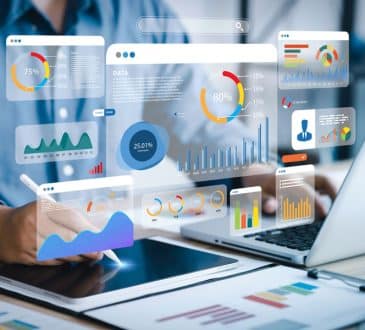How to Prepare Your Company for the Post-Pandemic World

No matter what type of company you run — a retail establishment, an accounting firm, or a custom software development company — it has likely been affected by the COVID-19 pandemic in some way. If you’re a restaurant owner, you’ve likely had to shut down or drastically alter the nature of your business. If you head a sales force, you’ve probably had to arrange for your team members to work from home.
Sadly, some businesses will never recover from the losses incurred during this highly challenging time. Others may be benefitted by it or others might be able to bounce back when it’s all over. If yours is one of the latter, now’s the time to start thinking about what your post-pandemic company will look like. Here are a few tips for getting started.
Take Stock
This step requires brutal honesty. Ask yourself the following questions:
- Where is your company now in terms of cash flow, staffing, supplies, and equipment?
- How are things different than they were before the pandemic?
- Does your business rely on one-on-one contact with customers?
- How successful were you prior to the pandemic?
- Do you provide something people might need when stay-at-home orders are lifted?
Now use those answers to realistically determine what your potential is. To help, use a SWOT analysis, which examines your Strengths, Weaknesses, Opportunities, and Threats.
For example, a restaurant’s strengths might include being highly successful prior to the pandemic, staying open through it with takeout service, an excellent communication channel with patrons, and a flexible, dedicated staff. Weaknesses might include supply chain disruptions. Opportunities might be to offer a more intimate dining experience as you space tables further apart to accommodate social distancing guidelines. And threats might include competing restaurants taking many of the same steps.
Determine Your Goals
Now what? You have a few options:
- Try to keep your company operating as closely as possible to the way it did before the pandemic.
- Alter your business model considerably.
- Change the course altogether.
Maybe your restaurant is great and has been successful in the past, but you’ve always wanted to create a meal delivery service. This is a great time to make that kind of change. Or perhaps conditions created by the pandemic are forcing your company to grow along the same trajectory it was following prior to the outbreak. For example, if your business specializes in home office equipment, you may be looking for ways to accommodate steep growth.
Whatever is happening in your business right now, you have an opportunity to shape it with your desires. Think about a best-case scenario and, using the following steps, see if you can make it work. (If not, don’t be afraid to start again and consider a different vision.)
Create a Plan
After taking the steps above, you know where you are and where you want to be. The next step is to determine how you’ll get there. Put on your entrepreneur’s cap and create a business plan based on your new objectives. Yes, you probably already have one from when you started, but at this point, you’re essentially starting over.
Even if you plan to keep things the same, it’s a good idea to ensure you haven’t overlooked anything important. A business plan can help by forcing you to examine all aspects of your operations.
Consider Culture
You’ll also need to think about things that might not appear in your business plan, such as culture changes as a result of the pandemic. Did you have to temporarily lay off some employees for financial or public health reasons? If so, might they be resentful of those who stayed on? Alternatively, did your employees band together and become closer as they worked together in the crisis? Your situation could even involve a combination of these factors.
No matter what’s happening in your company, the way your team members view their employment with you will likely be different. Anticipate what your workers might need to make the transition to the new normal, which could be anything from words of encouragement to added benefits to changes to your mission and vision statements.
Start Preparing
Study your plan, keeping in mind potential culture issues, and develop steps to take. For example, part of your business plan is your marketing approach. You may need to design new promotional materials, including your website, blog, thought leadership, and social media presence. Start now by creating a timeline and milestones to accomplish in the coming weeks and months.
Identify any gaps in your ability to implement your plans. For instance, if you’re experiencing supply chain disruptions, research alternative strategies, such as a new vendor or ways to do without the supplies you’re missing. If you need to take out a loan to cover expenses during the transition, start reaching out to lenders to find out what your options are.
The COVID-19 pandemic has already altered the way we view the world and the way we do business. Despite the many terrible aspects of this situation, many companies will survive and even thrive as the crisis subsides. Your company may need to think very differently to keep going and it’s worth investing some time to consider if and how that will happen.
Have you read?
# America’s most luxurious hotels, 2020
# Happiest countries in the world, 2020
# World’s Richest Tech Billionaire CEOs For 2020
# Best wedding destinations in the World for 2020
# Best Business Schools In The World For 2020
Add CEOWORLD magazine to your Google News feed.
Follow CEOWORLD magazine headlines on: Google News, LinkedIn, Twitter, and Facebook.
This report/news/ranking/statistics has been prepared only for general guidance on matters of interest and does not constitute professional advice. You should not act upon the information contained in this publication without obtaining specific professional advice. No representation or warranty (express or implied) is given as to the accuracy or completeness of the information contained in this publication, and, to the extent permitted by law, CEOWORLD magazine does not accept or assume any liability, responsibility or duty of care for any consequences of you or anyone else acting, or refraining to act, in reliance on the information contained in this publication or for any decision based on it.
Copyright 2024 The CEOWORLD magazine. All rights reserved. This material (and any extract from it) must not be copied, redistributed or placed on any website, without CEOWORLD magazine' prior written consent. For media queries, please contact: info@ceoworld.biz
SUBSCRIBE NEWSLETTER








